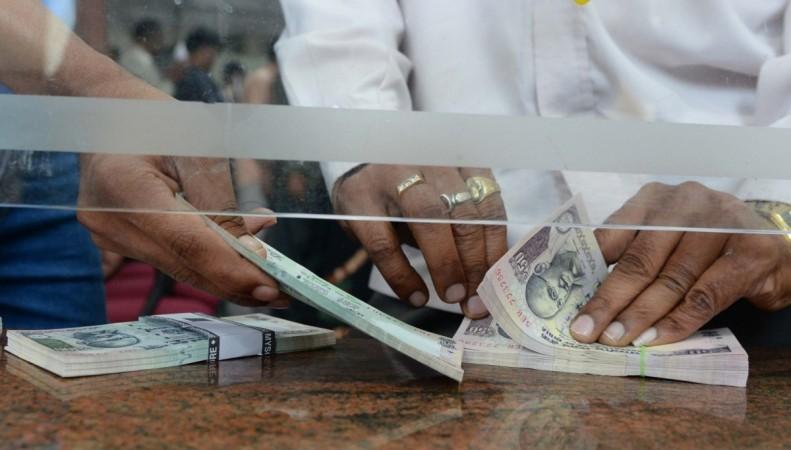
On August 2, the Reserve Bank of India (RBI) cut key interest rates by 25 basis points (bps) to 6 per cent on lower inflation numbers. If RBI cuts interest rates again – and, there is a strong possibility of a 25 bps cut again in December --, savers will have to make do with even lower interest income. Not just FDs or fixed deposits, lower interest rates also have a bearing on savings bank account deposits, small savings like NSC, KVP, and Public Provident fund (PPF).
For the sake of recapitulation, the latest quarter percentage point cut on August 2 means that the key lending rate is at its lowest since November 2010. For new borrowers, this is good news because they can get loans such as ones for homes at cheaper rates, when banks pass on the lower lending rates to their customers. But for savers, lower deposit rates mean that anyone who is dependent on interest income for a living will face a problem.
Now, let us examine whether there is a strong likelihood of more interest rate cuts being effected. Between April 2012 and August 2012, repo rate was lowered from 8.5 percent to 6 percent or 250 bps. This resulted in cheaper loans, and also cheaper bank FD interest rates. Today, India's largest bank SBI bank FD rates range from 5.5 percent to 6.75 percent. So, will RBI cut key interest rates again?
A 25 bps RBI rate cut on December 6, the date of the next monetary policy review, appears a definite possibility. We continue to see three compelling factors for another RBI cut.
One, inflation risks are subsiding. Experts track August inflation at 2.75-3 percent (excluding HRA impact), even after the tomato and onion price hikes.
RBI has met its inflation target of 4 percent in record time. If inflation (excluding the HRA impact) continues to undershoot the 4 percent target by a comfortable margin, then RBI has room to cut rates again.
Second, relatively high lending rates are delaying recovery, as many corporates have been complaining. Don't forget that the interest rate was at a record low of 4.25 percent in April of 2009. So, the government may try to cut rates lower to make loans appear extremely attractive.
Interest rates fall with less inflation risk
Finally, 'imported' inflation risks are receding, with oil prices coming off and a softer US dollar. Hence, a 25 bps cut before the industrial 'busy' season starts in October is something that will not surprise anybody.
If RBI lowers interest rates by another 25-75 bps over the next 12-15 months, t his will mean that the lending rate from 6 percent today will fall to between 5.25-5.75 percent – still, far lower than the 4.25 percent in April 2009. Historically, the banks take time to pass on lending rates, but deposit rates are cut much faster.
Falling bank FD deposit rates hurt savers who depend on interest income from their deposits. Though interest income is taxable, retired persons and conservative savers bank on FDs to get interest income.
At a 5 percent compounded interest deposit rate, a Rs 15 lakh bank FD gives you Rs 76,000 per year as interest income (before taxes).
At 8 percent, the interest earned is Rs 1.23 lakh. So, just a 3 percent drop in bank FD rate reduces your income by about Rs 47,000 a year for a Rs 15 lakh FD. Lower the rates go, the smaller will be the interest income.

Savings accounts: many of us keep a lot of 'emergency' money in savings bank accounts. But a larger proportion of people don't have much money left at the end of the month. Following India's largest bank SBI slashing saving bank account interest rate to 3.5 percent from 4 percent, eight private banks have reduced the interest rates offered on their savings accounts in the span of a week.
For a total deposit value of Rs 10 lakh in a savings bank account, a 0.5 percent rate cut means a loss of Rs 5,000 annually. At 4 percent, the total interest accumulated in one year on Rs 1 lakh would be Rs 40,604. For a 3.5 percent annual interest, the total interest accumulated at the end of the year would be Rs 35,462.
Small savings: You may recall that the government on July 1 slashed interest rates on small savings schemes by 10 basis points for the July-September period. Since April last year, interest rates on all small savings schemes have been recalibrated on a quarterly basis. This has affected returns on the National Savings Certificate scheme, Sukanya Samriddhi Account, Kisan Vikas Patra (KVP) and PPF.
The cut is due to the fact that interest rates of all small saving schemes are now linked to government bond yields. Hence, they are now recalibrated on a quarterly basis. Over the last couple of years, interest rates on most small savings schemes have witnessed a decline of about 100 bps. Most investors have made certain calculations about the size of their accumulated savings. However, they may be in for a harsh reality check if small savings rates are cut further. The key implication of the rate cut is that they would fall short of their desired savings corpus.

















